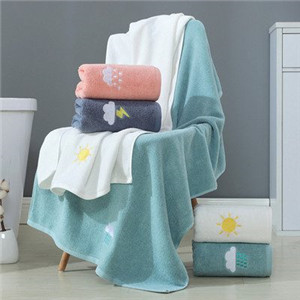Have you ever wondered why some bath towels are better at soaking up moisture than others? The secret lies in the science of absorbency. Let’s delve into the fascinating world of towel technology!
Fiber Composition: The type of fiber used in a towel significantly impacts its absorbency. Cotton, with its naturally porous fibers, is an excellent choice. The spaces between cotton fibers create capillary action, allowing water to be drawn into the towel.
Loop Length and Density: Towels with longer loops tend to be more absorbent. Longer loops provide more surface area for water to be captured. Additionally, densely packed loops increase the towel’s overall absorbency.
Twisting Techniques: The way fibers are twisted during manufacturing also plays a role. Low-twist or zero-twist towels have a plush, soft feel and excellent absorbency due to their airy structure.
Wash and Wear: Interestingly, some towels become more absorbent over time. Washing and using towels breaks in the fibers, making them softer and more efficient at soaking up water.
Microfiber Marvel: Microfiber towels are a modern innovation with exceptional absorbent properties. The ultra-fine fibers create a larger surface area, enhancing their ability to wick away moisture.
Chemical Treatments: Some towels undergo chemical treatments to enhance absorbency. However, these treatments might diminish over time with repeated washing.
In essence, towel absorbency is a result of intricate interplays between fiber composition, loop structure, twisting techniques, and even the wash and wear process. Understanding these scientific principles can help you make an informed choice when selecting bath towels that provide superior drying performance.







